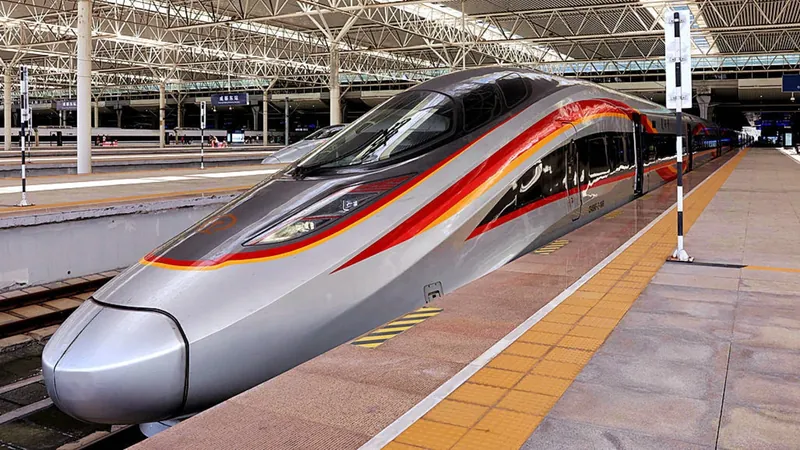
China's High-Speed Rail Network: A Financial Tightrope
2025-06-16
Author: Li
Concerns Over Growing Debt and Costs
China’s high-speed railway network, once a symbol of rapid modernization, is now facing stark financial realities. Observers are increasingly worried about its mounting debt and the declining spending power of passengers.
Staggering Losses Revealed
A report by the National Audit Office (NAO) has reportedly highlighted a staggering loss of approximately 100 billion yuan in just nine months ending December 31, 2024. While the NAO has yet to confirm this figure officially, the news has sparked intense debate among commentators.
The Great Debate: Expansion vs. Profitability
Some experts argue that extending high-speed rail services to remote areas over the past two decades was a poor decision, primarily driven by political aims rather than economic viability. However, others contend that these railways are essential public assets that connect underserved populations to major urban centers.
Profitability Issues in Perspective
Data on the financial success of China’s rail network is scarce. The China Railway's finances are often muddied by including older 'green-skinned' passenger train data. Reports show that while the Beijing-Shanghai high-speed railway experienced a decline in passenger numbers, it managed to increase its profits through shared services.
Market Challenges and Rising Expenses
The figures paint a complicated picture. Even though total revenue from train services rose, many lines struggled with low weekday ridership and escalating maintenance costs. Reports from early 2024 indicate a worrying trend: empty trains are becoming the norm amid a sluggish economy.
Ghost Stations on the Horizon
A troubling trend has emerged with the closure of around 20 high-speed stations since 2010 due to insufficient passenger traffic. Many of these so-called 'ghost stations’ are located in less economically vibrant inland provinces. Local governments initially pursued high-speed rail projects to demonstrate growth but are now grappling with financial pressures.
Possible Solutions and Future Outlook
As discussions of fare increases and the reduction of railway stations circulate, experts caution that improving the network’s efficiency and governance is easier said than done. One writer argues that China should focus more on the social benefits of its rail network rather than its profitability.
Conclusion: A Balancing Act
The future of China’s high-speed rail network remains uncertain as it strives to balance social objectives with financial sustainability. As authorities grapple with these challenges, the railway's role in connecting communities and boosting national mobility could be jeopardized.




 Brasil (PT)
Brasil (PT)
 Canada (EN)
Canada (EN)
 Chile (ES)
Chile (ES)
 Česko (CS)
Česko (CS)
 대한민국 (KO)
대한민국 (KO)
 España (ES)
España (ES)
 France (FR)
France (FR)
 Hong Kong (EN)
Hong Kong (EN)
 Italia (IT)
Italia (IT)
 日本 (JA)
日本 (JA)
 Magyarország (HU)
Magyarország (HU)
 Norge (NO)
Norge (NO)
 Polska (PL)
Polska (PL)
 Schweiz (DE)
Schweiz (DE)
 Singapore (EN)
Singapore (EN)
 Sverige (SV)
Sverige (SV)
 Suomi (FI)
Suomi (FI)
 Türkiye (TR)
Türkiye (TR)
 الإمارات العربية المتحدة (AR)
الإمارات العربية المتحدة (AR)